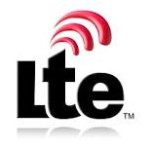 A new report from GSA (Global mobile Suppliers Association) Evaluating the LTE Broadcast Opportunity published today finds rapidly rising interest in LTE Broadcast, increasing evidence of a solid business case for deployment, and predicts that numbers of deployments will grow significantly over the next five years, reaching a potential customer base of two billion by 2020.
A new report from GSA (Global mobile Suppliers Association) Evaluating the LTE Broadcast Opportunity published today finds rapidly rising interest in LTE Broadcast, increasing evidence of a solid business case for deployment, and predicts that numbers of deployments will grow significantly over the next five years, reaching a potential customer base of two billion by 2020.
Trials of LTE Broadcast services based on eMBMS have been taking place all over the world. Over 30 mobile operators have so been involved in technical lab or field trials of eMBMS with a view to using it to reduce the load on their networks by broadcasting popular TV and video content rather than sending it to each viewer individually. Many more are planning to trial the technology in the coming 12-24 months, with their eyes on this and other use cases, which include innovative stadium entertainment services; emergency broadcast systems; distribution of public and transport information; software and firmware upgrades for computers and Internet of Things (IoT)-connected devices; and mobile delivery of broadcast TV.
The research and analysis for the report, which was undertaken for GSA by technology analyst company Innovation Observatory, encompassed interviews with leading vendors, operators and broadcasters trialing eMBMS, and surveys of the global telecoms community and of potential end users/buyers of LTE Broadcast services.
One of the biggest hurdles to the introduction of LTE Broadcast – the availability of supporting devices – is getting smaller all the time. Our analysis suggests that nearly 100 devices (including phones, tablets, laptops, modules, routers hotspots and home gateways) have now either been used in eMBMS trials, or contain the chips sets that would enable them to be used for LTE Broadcast services. Of those, over 60 have been identified as being compatible with eMBMS middleware, and should be capable of software upgrades.
Alan Hadden, VP of Research, GSA said: “The availability of devices to support LTE Broadcast services is improving all the time, and given mobile operator interest in services we expect that the variety and number of device options will only grow to support their service ambitions in the coming months. Many new devices contain chipsets that are eMBMS compatible, and are capable of running the most common eMBMS middleware solutions”.
The report also concludes that it is possible to build a positive business case for the deployment of eMBMS based on the launch of new services that end users say they would be willing to pay a bit more for, and efficiency and cost savings.
According to Simon Sherrington, Innovation Observatory, Managing Director, looks very much like the two LTE Broadcast launches that we have already seen, in Korea and the U.S., will soon be joined by others. There is interest in LTE Broadcast in all regions, including from the biggest network operators.
The GSA’s report, Evaluating the LTE Broadcast Opportunity, analyses the drivers and barriers to deployment of LTE Broadcast services based on eMBMS, reviews operators€™ activity in the form of trials and service launches, the availability of eMBMS-compatible devices and considers the business case for eMBMS investment. Its production was sponsored by a number of operators actively reviewing the capabilities of LTE Broadcast: EE, PCCW HKT, Plus (Polkomtel), Smartfren and Telstra, together with several vendors from GSA’s membership.



